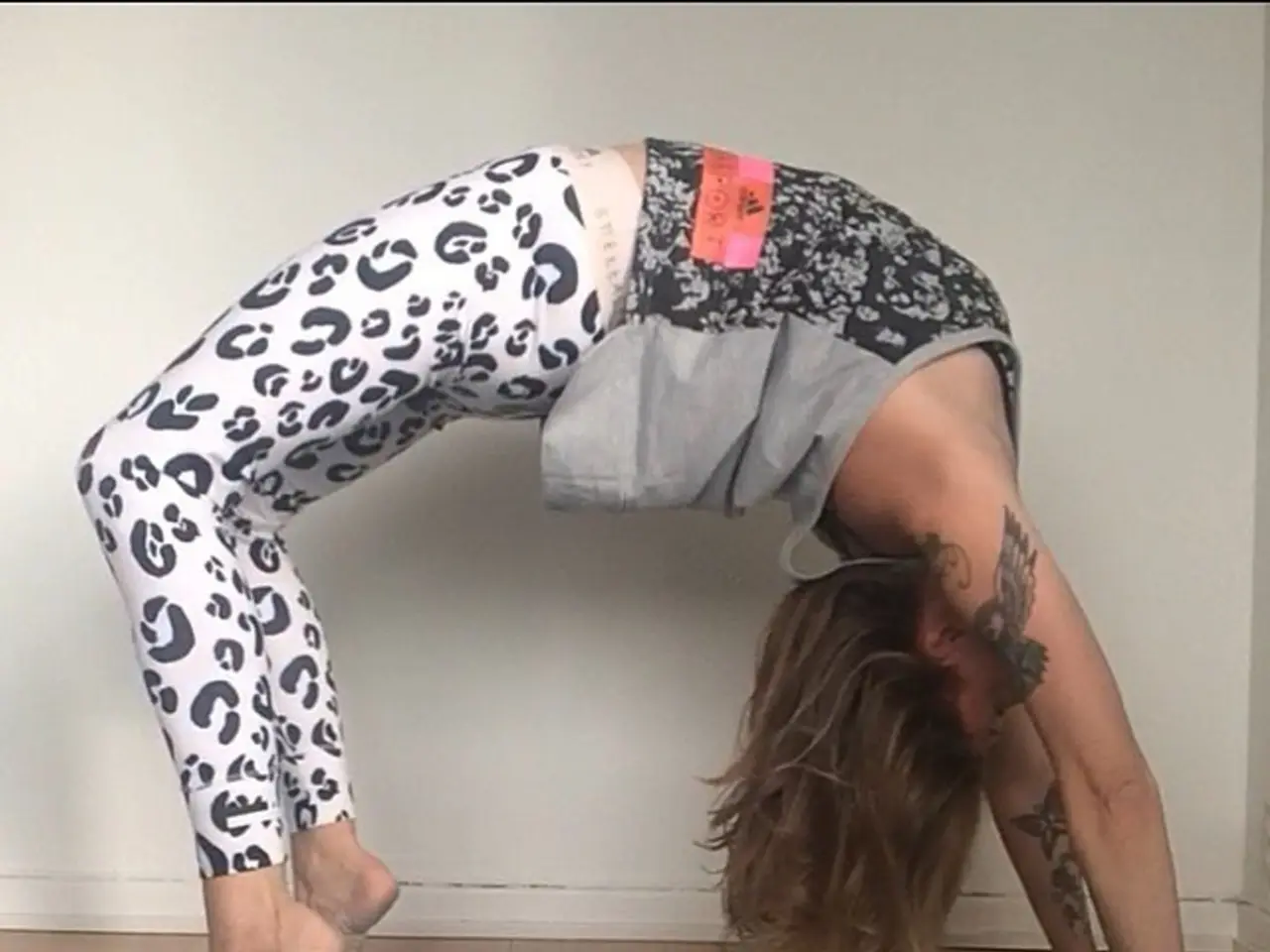Yoga instructor suggests these six exercises for enhancing mid-back flexibility
In a world where many of us spend long hours sitting at desks, the discomfort of back pain and poor posture is a common concern. However, a potential solution may lie in Esther da Costa's six-move mid-back mobility routine. This routine, devoid of any additional equipment, focuses on increasing flexibility, loosening tight muscles, and promoting better alignment in the mid-back (thoracic spine) region.
The six moves in the routine are: Low lunge archer arms, High to low puppy pose press, Threaded needle arms, Thoracic rotation on elbows, Hands to head flex and extend, and Standing side-to-side twists. By performing these movements, individuals can expect to reap benefits such as reduced back pain, improved posture, and enhanced spinal mobility.
The routine's effectiveness stems from its ability to increase joint range of motion, relieve muscular tension, and facilitate proper spinal movement patterns. This, in turn, reduces strain on the back, encourages a more upright and healthy posture, and promotes greater ease of movement in daily activities.
Individuals with chronic tightness in their shoulder and neck muscles may find particular relief after practicing da Costa's routine. The routine is also beneficial for those new to yoga, as it can be added to a regular workout or used as a stand-alone routine.
One may notice an improvement in their mid-back stiffness, as well as a loosening of the shoulder and neck muscles. Rotational range of motion in the cervical spine (neck) may also increase. In fact, after three days of practicing da Costa's mid-back mobility workout, some individuals have reported sleeping better.
Mid-back stiffness is often caused by prolonged sitting, poor posture, and repetitive habits that restrict movement. By addressing these issues, the routine can help prevent forward rounding of the shoulders and related musculoskeletal issues.
The routine can be combined with beginner yoga stretches or a full-body dumbbell workout for a cool-down, making it a versatile addition to any fitness routine. For those focusing on core strengthening exercises to reduce lower back pain, incorporating da Costa's mid-back mobility routine could further enhance the benefits.
In conclusion, Esther da Costa's six-move mid-back mobility routine offers a simple, equipment-free solution for reducing back pain, improving posture, and enhancing spinal mobility. By promoting thoracic spine flexibility, strength, and proper movement, the routine can collectively reduce back pain, improve posture, and enhance spinal mobility, making it a valuable tool for maintaining spinal health and functional movement patterns.
By incorporating Esther da Costa's mid-back mobility routine into their health-and-wellness schedule, individuals can target mid-back stiffness, address the discomfort of back pain, and improve overall posture. The routine, consisting of low lunge archer arms, high to low puppy pose press, threaded needle arms, thoracic rotation on elbows, hands to head flex and extend, and standing side-to-side twists, promotes flexibility in the thoracic spine region and reduces strain on the back.
For those seeking a wellness approach that encompasses fitness-and-exercise and mental-health, this routine can be a beneficial addition. The routine's ability to relieve muscular tension, enhance spinal mobility, and improve posture can contribute to better sleep, and potentially address issues related to chronic tightness in the shoulder and neck muscles.
Whether practiced alongside beginner yoga stretches, a full-body workout, or as a stand-alone routine, the mid-back mobility workout can be tailored to meet various fitness needs, from core strengthening exercises to general wellness and mobility improvement. The science behind the routine suggests that its regular practice can help prevent musculoskeletal issues caused by prolonged sitting and poor posture, making it a valuable tool for maintaining optimal physical health.




